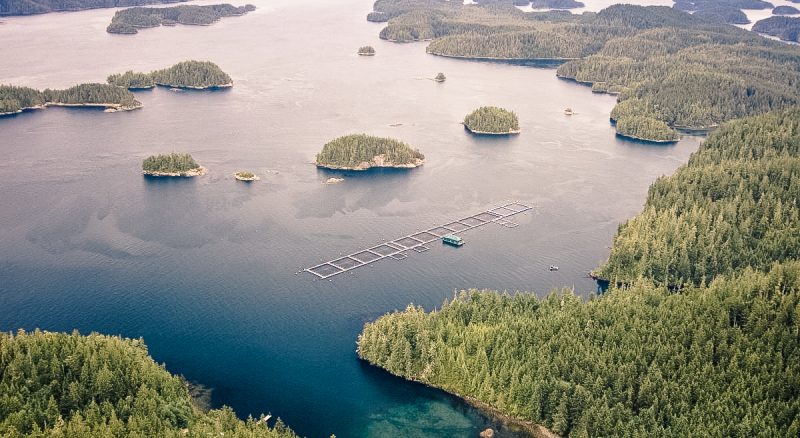Apocalyptic ‘nonsense’ from an anti-fish farm activist
“Much of this anti-fish farm stuff is absolute nonsense…when I ask them to challenge the science or my findings, I just get called names by the activists,” Dr. Martin Jaffa, a UK-based expert on fish health and nutrition
By Fabian Dawson
SeaWestNews
With the world focused on combating COVID-19 and securing food supply chains, BC’s loudest anti-fish farm activist is once again spreading apocalyptic falsehoods aimed at shutting down the sustainable aquaculture operations on Canada’s West Coast.
Ignoring research by globally renowned scientists and traditional knowledge that have recognized that salmon stocks vary not only year to year, but also on decades-long time cycles, Alexandra Morton, who claims to be an independent biologist, told a Parliamentary inquiry that “salmon farms are the greatest single impact on wild salmon since the glaciers.”
“The one place on this coast where the sea lice are going down is the Broughton archipelago where First Nations have removed several million farmed Atlantic salmon,” she told the Standing Committee on Fisheries and Oceans last week
“I told our MPs If you don’t see the scandal here, you are not looking,” the activist posted on her Facebook page.
Apparently it is Morton who is not looking, say top fish health experts.
One of them is Dr Martin Jaffa, a UK-based expert on fish health and nutrition, who has posted a video on YouTube to counter the claims by Morton.
“There appears to be an unwillingness by some to wait and see what impacts result from these closures (in the Broughton),” said Dr. Jaffa.
The Broughton Archipelago, on the northeastern flank of the Queen Charlotte Strait in British Columbia, is seeing an orderly transition of 17 fish farms, that will be completed by 2023.
The central claim for the removal of fish farms in the Broughton was that the net pens posed disease transmission and naturally occurring sea lice risks to migrating wild stocks.
Morton has been throwing out some new “miraculous” salmon comeback numbers over the past few months to shore-up her agenda.
Dr. Jaffa in his YouTube explainer looked at current and historical publicly available sea lice prevalence reports at three farms in the Broughton – Glacier Falls, Birdwood and Wicklow – which are also in the same area as Morton’s ‘miraculous’ comeback zone.
“The main point arising from the 2019 data is that the fish sampled from the Glacier sites has relatively high lice counts, even though the (Morton) report clearly states that the Glacier farm had shut down that year. If there were no fish in the farm where were these lice coming from, certainly there’s no other farm upstream from the Glacier site,” said Dr Jaffa.
In 2018, when the farms in the Broughton were stocked with fish, the sea lice infestation rate of sample fish was 34 percent.
According to 2020 findings, lice levels are low in the area with a 1.3 lice per fish and an infestation rate of 34 percent, also.
“Alexandra Morton has distributed the results from the 2020 sampling to selected organizations, but has yet to make this data freely available,” said Dr. Jaffa.
“Whilst Alexandra Morton and her team sampled sites around the Broughton archipelago, they are not the only ones to do so.
“The salmon industry has commissioned an independent company, Mainstream Biological Consulting of Campbell River, to sample sites across all of the local salmon farming areas in British Columbia. And they have done so since 2015… the data from Mainstream Biological Consulting are freely available for public consultation.
“What is most interesting is when this latest data is compared against that from previous years there is some variations between species but the numbers are not hugely different. The key point though is that in 2020 there were no farms operating along the central migration route, yet the lice counts are largely unchanged from previous years,” he said.
Dr Jaffa also pointed out that the results of sampling for sea lice in the Tribune Channel at the edge of the Broughton Archipelago, showed the second highest sea lice infestation rate when compared to other ocean farming areas in BC.
This despite there being no farms in the Tribune Channel.
Last month, Morton and her group claimed hazardous levels of naturally occurring parasitic sea lice in B.C. waters this year should necessitate the shutting down of the salmon farming industry, which supports over 7,000 families in the province.
Canada’s Department of Fisheries and Oceans (DFO) responded saying: “Sea lice in British Columbia during the 2020 outmigration (March 1 to June 30) have been controlled, with no facilities violating licence conditions.”
In a telephone interview with SeaWestNews, Dr. Jaffa said Morton’s observation about the numbers, extrapolated from her samples, do not show a new post fish farm phenomenon.
“I have asked for the full data set but have not been able to get it,” he said.
“Much of this anti-fish farm stuff is absolute nonsense…when I ask them to challenge the science or my findings, I just get called names by the activists.
“The fish farmers also need to do more to counter this misinformation otherwise we risk a sustainable food supply system from being shut down.” Dr. Jaffa told SeaWestNews.
(Image courtesy of Mowi showing a salmon farm in the Broughton Archipelago)

